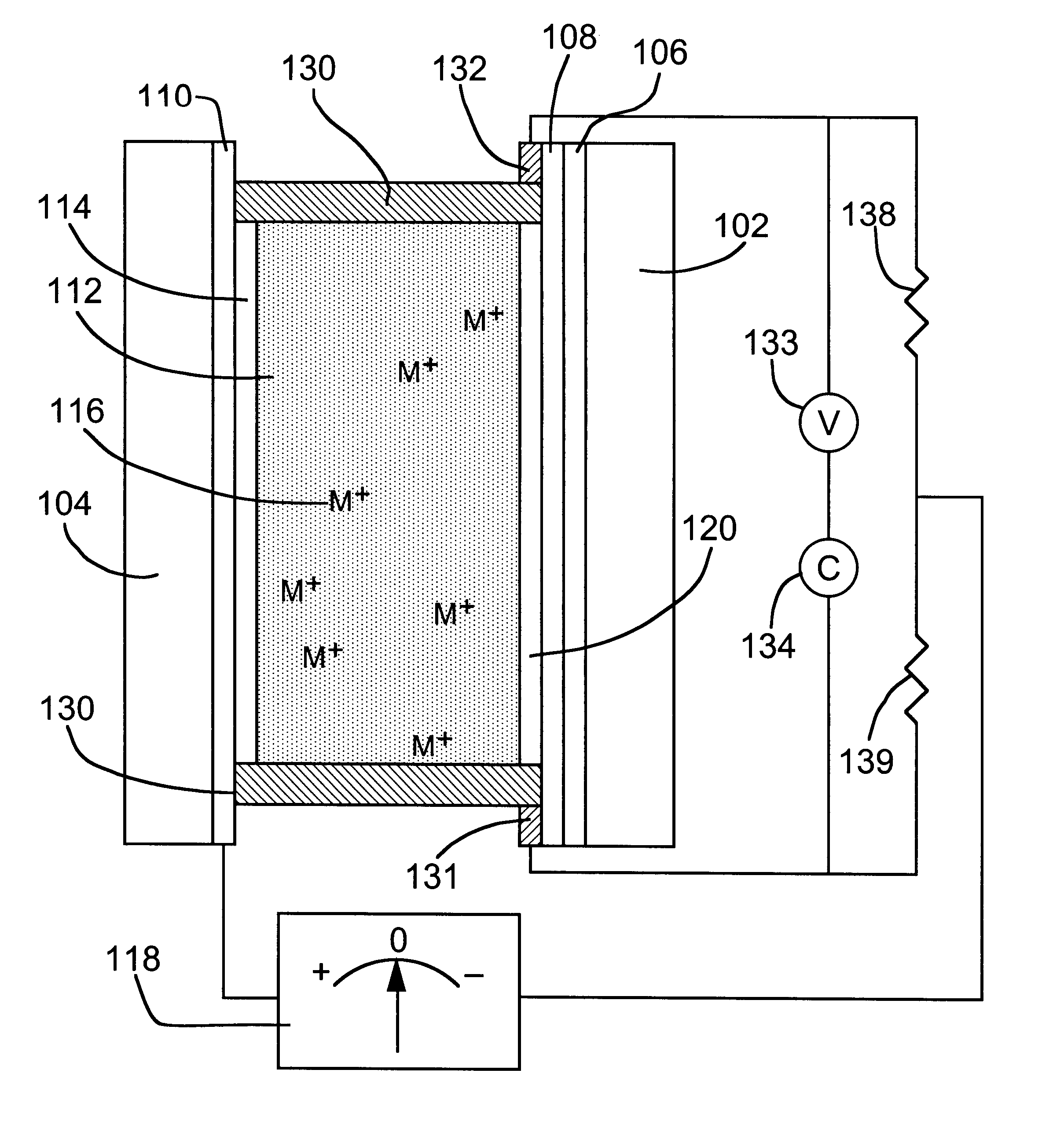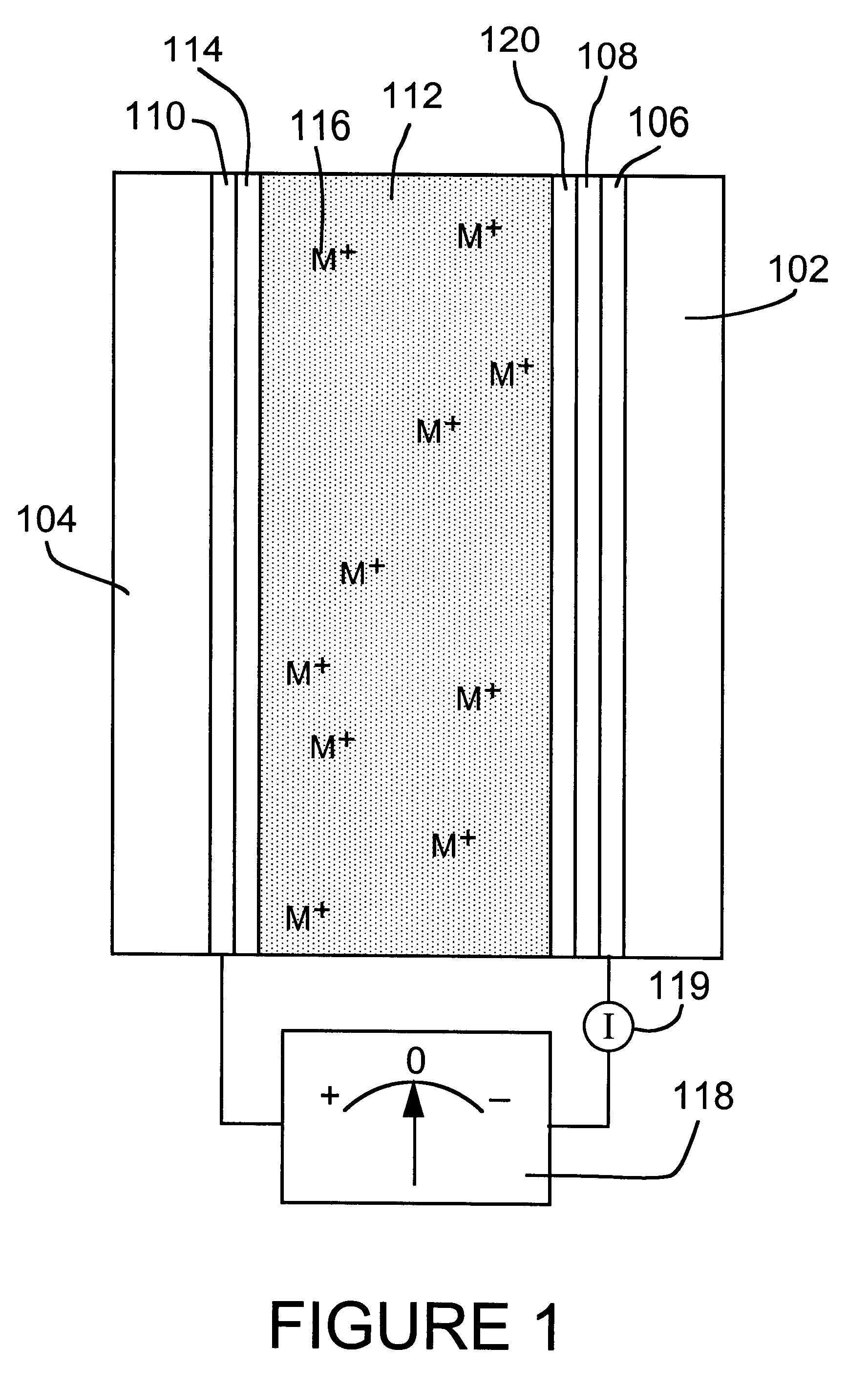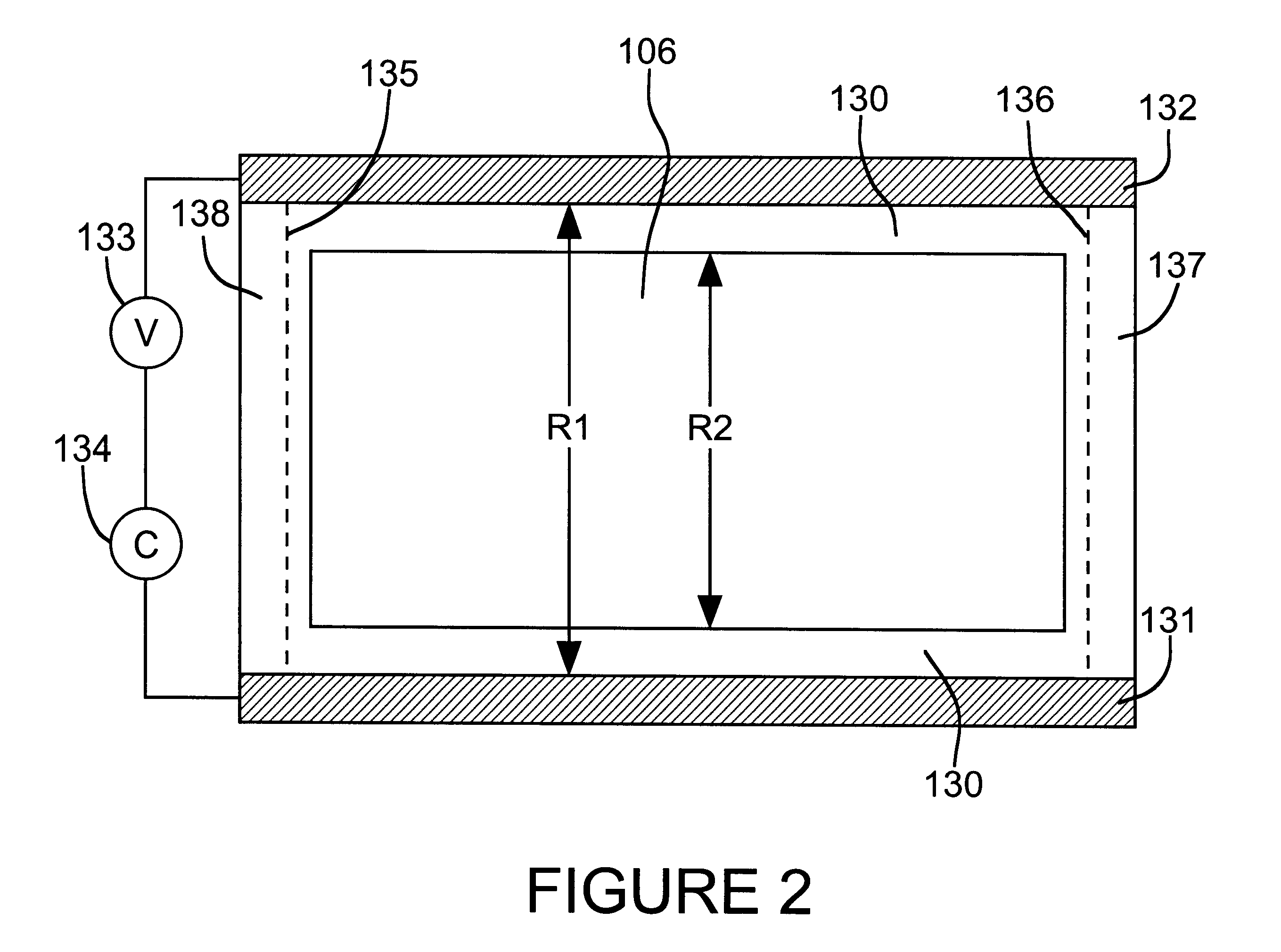Sunlight transmitted through windows in buildings and transportation vehicles can generate heat (via the
greenhouse effect) that creates an uncomfortable environment and increases
air conditioning requirements and costs.
These approaches are only partially effective, since the window itself is heated and because these devices, such as
electrochromic devices, are relatively expensive and exhibit limited durability and cycle life.
Certain
liquid crystal-based window systems switch between transmissive and opaque / scattering states, but these systems require substantial voltages to maintain the transparent state.
Bright light from headlamps on following vehicles reflected in automobile rear and side view mirrors is annoying to drivers and creates a safety
hazard by impairing driver vision.
Such devices do not provide close control over the amount of reflected light, and are expensive to fabricate since a very constant inter-electrode spacing is required to provide uniform dimming.
In early attempts to
exploit reversible electrodeposition of a
metal for
light modulation, the deposits obtained on transparent substrates presented a rough and black, gray, or sometimes
colored appearance (typical of finely-divided metals) and exhibited poor
reflectivity and high
light absorbance, especially when thick.
Warszawski (U.S. Pat. No. 5,056,899), which is concerned with displays, teaches that reversible metal electrodeposition is most appropriate for display applications, since significant disadvantages for transmission devices were given (e.g., the possibility of
metal deposition at the counter electrode).
Such teachings imply that the application of reversible
metal deposition to smart windows must involve light absorption by the finely divided electrodeposited metal, which would result in heating of the device itself and thus the space inside.
The low reflectance of this type of deposit would not be appropriate for adjustable mirror applications.
These authors also utilized a counter electrode reaction other than metal electrodeposition /
dissolution, and also never obtained a mirror deposit.
Thus, Ziegler et al. provide no teachings relevant to the effect of
electrolyte composition on the deposition /
dissolution rate and quality of mirror electrodeposits.
Such electrolytes, however, have much more limited temperature and
voltage operating ranges compared with organic-based electrolytes with high boiling solvents.
Unfortunately, such additives are typically destroyed during the electrodeposition process, greatly limiting cycle life.
Furthermore, this approach fails to produce highly-reflective mirror-like deposits that are required for adjustable mirror applications and provide the superior
heat rejection needed for smart windows.
However, the described electrolytic formulation fails to provide the inherent stability, high quality deposits, good erasure and long cycle life needed for practical applications.
Since no metal electrodeposition occurs in
electrochromic devices, however, the grid in this case is used to provide a transparent electrode, not to maintain transparency by localizing
metal deposition.
A significant problem with adjustable mirrors of the type suitable for automotive applications, including both REM and electrochromic mirrors, is that simple means for monitoring the reflectance of such devices are not available.
Such sensors are not only expensive but are also aesthetically undesirable, increase the bulkiness of the device, and typically monitor only a small area while blocking a portion of the mirror itself.
Similar difficulties exist for variable transmission devices as well.
However, as the mirror was subjected to multiple cycles in which complete erasure of the mirror metal did not occur, measurement imprecision and minor efficiency imbalances between the metal electrodeposition and dissolution reactions would introduce cumulative errors in the calculated thickness and associated reflectance.
These errors could be mitigated by periodic full erasure of mirror metal layer 120 from mirror electrode 106 to establish a new starting point for the charge integration, but this would be impractical at high cycle rates and the necessity of such periodic erasure would be unacceptable for many applications.
In addition, the equipment required for accurate coulometric tracking is relatively expensive.
In addition, contacts exposed to the
electrolyte would have to be sufficiently
corrosion-resistant to avoid degradation under anodic voltages used for mirror
state switching, which would require more expensive materials or coatings while providing no
advantage.
In principle, the
sheet resistance can be calculated as a function of the thickness of the mirror metal deposit but the calculation is complicated by geometric considerations.
 Login to View More
Login to View More  Login to View More
Login to View More 


